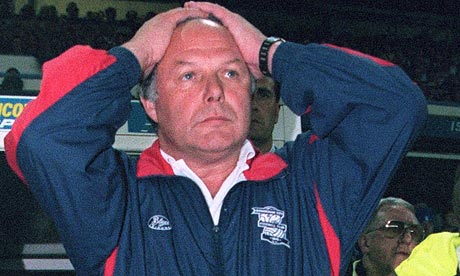
There's Only One Barry Fry is a fly on the wall documentary, with Sean Bean as voice over, that follows Barry Fry through the 1996-97 season at Peterborough Utd (Posh) after becoming the new manager of the team and also the new owner.
I think what makes this documentary so compelling and good to watch is the fact that Barry is such a large character, he is very open and frank about everything and certainly does not hide his emotions, especially in the dressing room.
I liked how they showed all aspects of his life, the game side - in the dressing room with the players, on the pitch, the business side of it - in the board room, making new signings and then at home with his family I think this gave an all round view and you got to know all sides of him and how important football was to him and I think because of that it made him a very likeable person because even if he did make mistakes you could certainly see his passion and what he had sacrificed and personally put on the line to help the club.
They followed him through a season and they made each game Peterborough played such a big part of the documentary which I think really added to the tension for the audience with the way they showed it. The first thing they did was showed him in the dressing room before each game where he would normally be quite positive. Then when the game was in play they would focus on him at the touchline where he'd be shouting and swearing and enduring a roller-coaster of emotions as his club scored goals and let goals in. I liked how they used a lot of close ups of his face at this point because as part of the audience you really got a sense of what he was going through. They also used cross fades of his reactions throughout the match which again heightened the sense of emotion, and most of the time, the despair he felt. The music played a big part as well as they used opera music over the top of his close ups which enhanced the sense of dread and doom for Barry and his team, it also meant they didn't have to show them losing on the pitch because you could already gather this from the close up shots of his facial expressions and the music.
There was also much use of cutaways and establishing shots of the football ground inside and out and things around the football ground, for example during the build up to a match it kept cutting to a car park, which had a train line behind it, and each time they cut back to it the car park would be a little more full each time and there was always a train going past in the background.
They also seemed to make a not so interesting football ground and area look quite interesting with the range of cutaways because I live in Peterborough and it kind of showed me a whole different side or way of looking at it.

Thanks for shear this content !!dressing sense for female in india
ReplyDelete